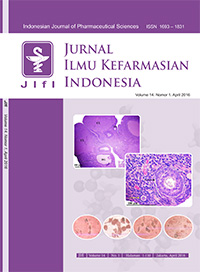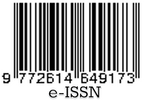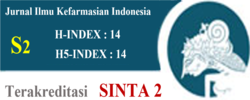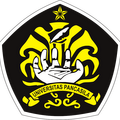Identifikasi Lektin Umbi dari Typhonium flagelliforme (Lodd.) Blume
Abstract
Typhonium flagelliforme atau yang dikenal dengan keladi tikus merupakan tumbuhan perdu yang banyak tumbuh di Indonesia. Tumbuhan ini mengandung lektin pada umbinya yang memiliki aktivitas antikanker. Namun hingga saat ini, tidak ada informasi ilmiah yang mengkaji mengenai lektin yang terdapat di umbi T. flagelliforme yang tumbuh diberbagai wilayah Indonesia. Tujuan dari penelitian ini adalah untuk mengidentifikasi dan mengkarakterisasi lektin umbi dari tujuh aksesi T. flagelliforme di Indonesia. Umbi yang digunakan dalam penelitian berumur 6 bulan tanam. Ekstrak protein umbi yang didapat dianalisis kandungan protein, toksisitas, dan aktivitas hemaglutinasinya. Aksesi yang memiliki aktivitas hemaglutinasi tertinggi, lektinnya dipurifikasi menggunakan kolom DEAE-Sepharose dan CM monolitic. Hasil menunjukkan bahwa protein umbi dari setiap aksesi memiliki toksisitas dan aktivitas hemaglutinasi. Aksesi Solok memiliki total protein dan aktivitas hemaglutinasi tertinggi dibanding aksesi lainnya. Aksesi ini memiliki kandungan lektin dengan bobot molekul 12,67 kDa. Lektin ini stabil pada temperatur 20 hingga 40 °C dan pada pH 5,0 hingga 7,2. Informasi karaktersitik ini dapat membantu dalam pengembangan obat antikanker berbasis lektin.
Licencing
All articles in Jurnal Ilmu Kefarmasian Indonesia are an open-access article, distributed under the terms of the Creative Commons Attribution-NonCommercial-ShareAlike 4.0 International License which permits unrestricted non-commercial used, distribution and reproduction in any medium.
This licence applies to Author(s) and Public Reader means that the users mays :
- SHARE:
copy and redistribute the article in any medium or format - ADAPT:
remix, transform, and build upon the article (eg.: to produce a new research work and, possibly, a new publication) - ALIKE:
If you remix, transform, or build upon the article, you must distribute your contributions under the same license as the original. - NO ADDITIONAL RESTRICTIONS:
You may not apply legal terms or technological measures that legally restrict others from doing anything the license permits.
It does however mean that when you use it you must:
- ATTRIBUTION: You must give appropriate credit to both the Author(s) and the journal, provide a link to the license, and indicate if changes were made. You may do so in any reasonable manner, but not in any way that suggests the licensor endorses you or your use.
You may not:
- NONCOMMERCIAL: You may not use the article for commercial purposes.
This work is licensed under a Creative Commons Attribution-NonCommercial-ShareAlike 4.0 International License.





 Tools
Tools





















